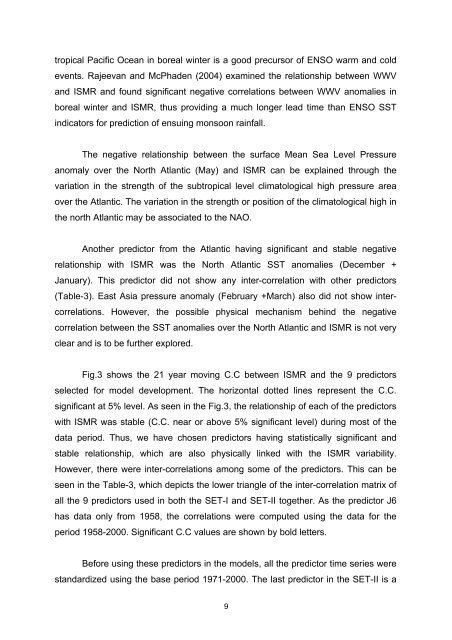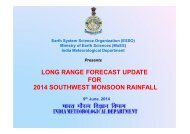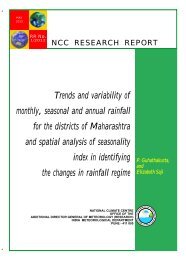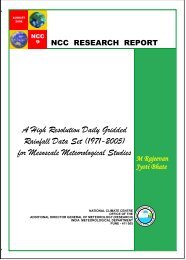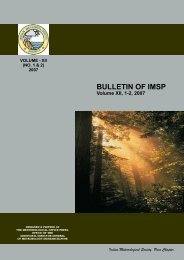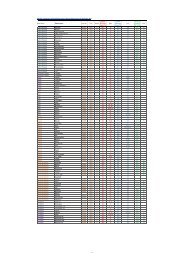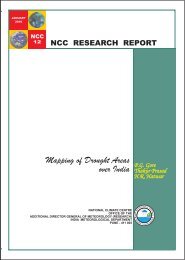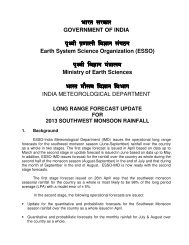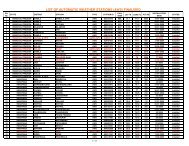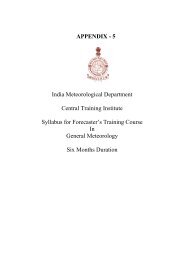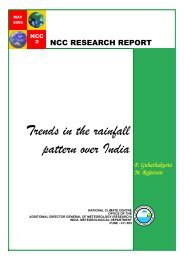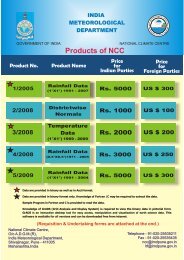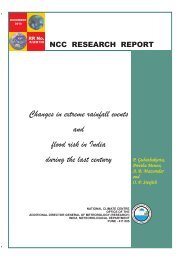NCC Report No. 1 - (IMD), Pune
NCC Report No. 1 - (IMD), Pune
NCC Report No. 1 - (IMD), Pune
You also want an ePaper? Increase the reach of your titles
YUMPU automatically turns print PDFs into web optimized ePapers that Google loves.
tropical Pacific Ocean in boreal winter is a good precursor of ENSO warm and coldevents. Rajeevan and McPhaden (2004) examined the relationship between WWVand ISMR and found significant negative correlations between WWV anomalies inboreal winter and ISMR, thus providing a much longer lead time than ENSO SSTindicators for prediction of ensuing monsoon rainfall.The negative relationship between the surface Mean Sea Level Pressureanomaly over the <strong>No</strong>rth Atlantic (May) and ISMR can be explained through thevariation in the strength of the subtropical level climatological high pressure areaover the Atlantic. The variation in the strength or position of the climatological high inthe north Atlantic may be associated to the NAO.Another predictor from the Atlantic having significant and stable negativerelationship with ISMR was the <strong>No</strong>rth Atlantic SST anomalies (December +January). This predictor did not show any inter-correlation with other predictors(Table-3). East Asia pressure anomaly (February +March) also did not show intercorrelations.However, the possible physical mechanism behind the negativecorrelation between the SST anomalies over the <strong>No</strong>rth Atlantic and ISMR is not veryclear and is to be further explored.Fig.3 shows the 21 year moving C.C between ISMR and the 9 predictorsselected for model development. The horizontal dotted lines represent the C.C.significant at 5% level. As seen in the Fig.3, the relationship of each of the predictorswith ISMR was stable (C.C. near or above 5% significant level) during most of thedata period. Thus, we have chosen predictors having statistically significant andstable relationship, which are also physically linked with the ISMR variability.However, there were inter-correlations among some of the predictors. This can beseen in the Table-3, which depicts the lower triangle of the inter-correlation matrix ofall the 9 predictors used in both the SET-I and SET-II together. As the predictor J6has data only from 1958, the correlations were computed using the data for theperiod 1958-2000. Significant C.C values are shown by bold letters.Before using these predictors in the models, all the predictor time series werestandardized using the base period 1971-2000. The last predictor in the SET-II is a9


